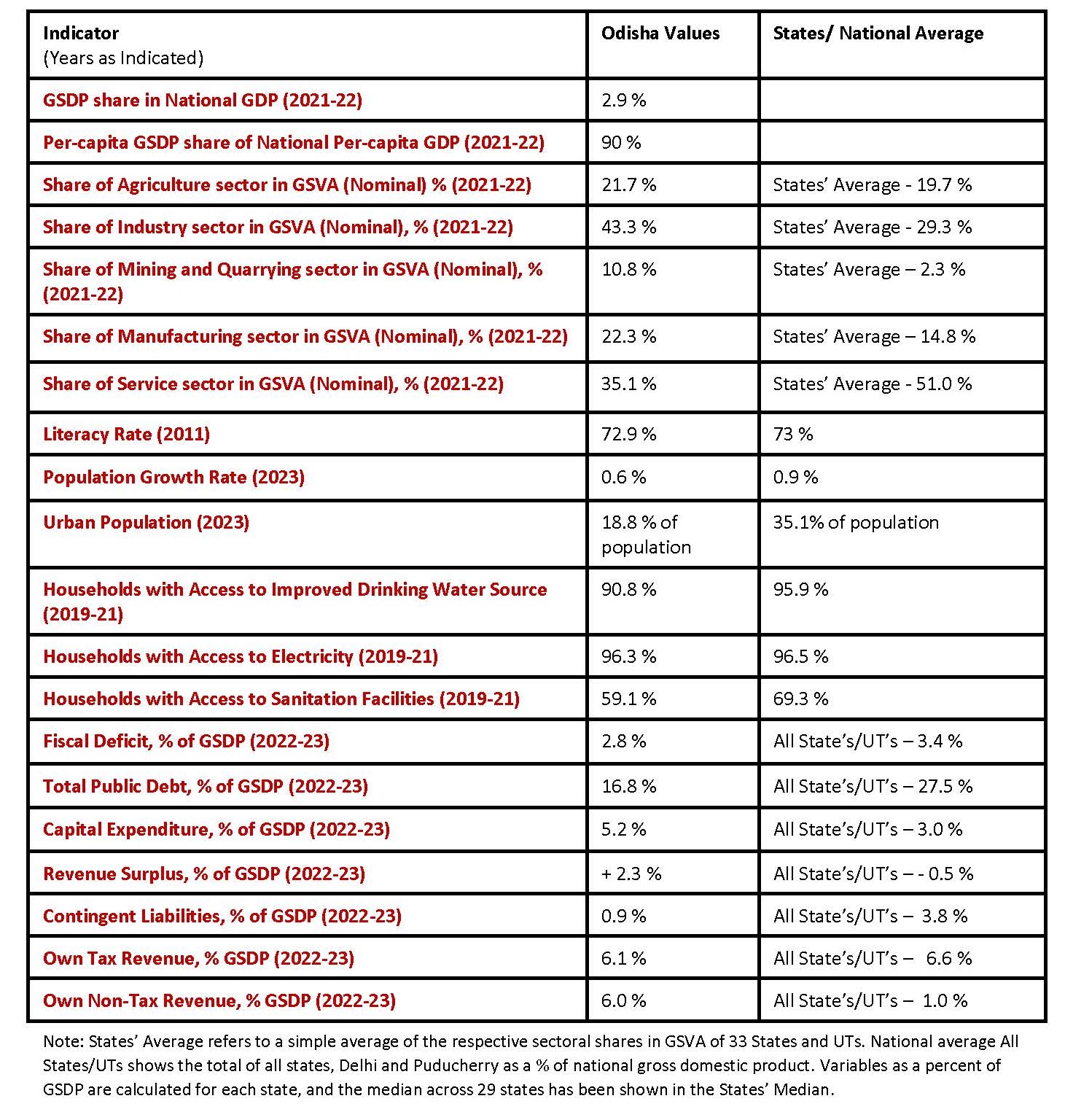Odisha’s Breakout Moment is here!
11 Apr 2024
Opinion: Poonam Gupta.
Odisha, India’s eleventh largest state by population and fourteenth largest by size of economy, has come a long way during the last two decades. At nearly $ 100 billion, if Odisha were a country, its economy would be larger than Tanzania, Sri Lanka or Ghana.
The growth momentum has been evident across sectors including agriculture, manufacturing, and services. Additionally, at nearly 10 percent of its economy, and growing at 8 percent annually mining has contributed to Odisha’s economic well-being as well as to its robust public finances. Thanks to the mining royalties, the state has a unique fiscal advantage. It collected non-tax revenue to the tune of 3.5 percent of its GDP a year compared to 1 percent for an average Indian state during the last decade.
The state’s rising prosperity has been accompanied by notable improvements in a variety of socio-economic markers such as gross enrollment ratio, gender parity index, infant mortality rate, fertility rate, life expectancy, immunization, and access to sanitation, drinking water and electricity.
Odisha has among the best fiscal yardsticks due to its deft fiscal management.
The state has been running a revenue surplus, unlike the revenue deficit for an average state; holds very few contingent liabilities; and runs fiscal deficit within the limits mandated under its fiscal rule. The state’s capital expenditure has doubled to nearly 5 percent of its GDP during the last decade, and far exceeds that of an average state.
Further, under most conceivable scenarios, its already small public debt is projected to decline further.
Yet, Odisha still lags on a host of indicators, including urbanization (its urbanization rate of 18 percent is only half that of the national average); enrollment ratio in higher education (which is only 22 percent compared to national average of 28 percent and much below that of the leading states such as Tamil Nadu’s 47 percent); and bank credit to GDP ratio (which at 29 percent is nearly half that of the national average).
Examples such as these indicate that despite lifting itself from the rank of a low-income economy to that of a low middle-income one, the state has miles to cover for it to become an advanced economy or to contribute to nation’s goal of becoming an advanced economy during the coming years.
So what may Odisha do to take a leap into the club of richer states such as Gujarat, Tamil Nadu and Karnataka, leaving behind the company of poorer states such as Rajasthan and West Bengal.
First and foremost, the state needs to elevate its aspirations. It should aim to attain double-digit growth rate and prepare its policy framework accordingly.
Second, a high middle-income economy with a per capita income of $4500, or a high-income economy with a per capita income of $12500, looks very different from today’s Odisha with a per capita income of about $2000. Higher income economies are less dependent on agriculture and more on manufacturing and modern services; less rural and more urban; more digitally connected; more innovative; and more capital and skill- intensive. For Odisha to aspire to be an upper middle-income or a high-income economy, it ought to steer its growth strategy keeping these end goals in sight.
Doing so would require allocating public expenditure suitably on urbanization, skill formation, and R&D; simultaneous development of institutions and state capacity; and far greater domestic and international integration to attract capital, technology, and access to markets.
Third, its development strategy may emulate success stories in specific sectors from various other states and countries. For example, it can take cue from Kerala and Goa in international tourism (Odisha gets only 0.7 percent of the domestic and 0.4 percent of international tourism); Karnataka and Telangana in offering an alternative IT hub; and Tamil Nadu and Gujarat in manufacturing.
Unless Odisha pursues a more ambitious pathway, it may soon find the existing drivers of growth running out of steam. Early evidence points to such a possibility. Its GDP growth has decelerated to 6.6 percent during the last decade from 8.1 percent in the preceding decade. Worryingly, deceleration has been equally noticeable in manufacturing, mining, and services.
Odisha now has all the conditions to be the next breakout state, for which it should be very proud. What it needs now is to shift gears.
Key Statistics for Odisha and the National Averages

The writer is director general of National Council of Applied Economic Research. Views are personal.
Published in: The Economic Times, 11 Apr 2024







